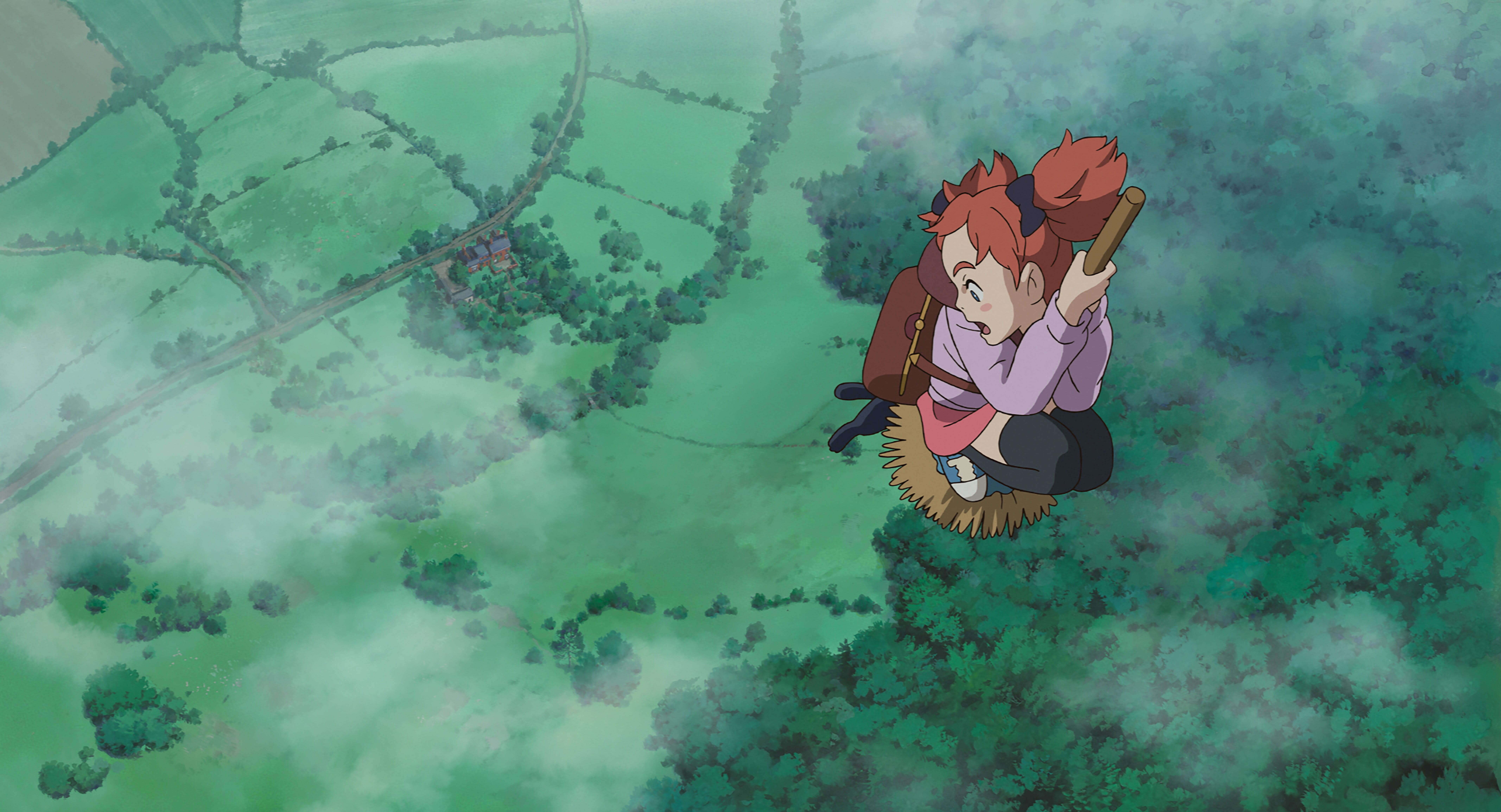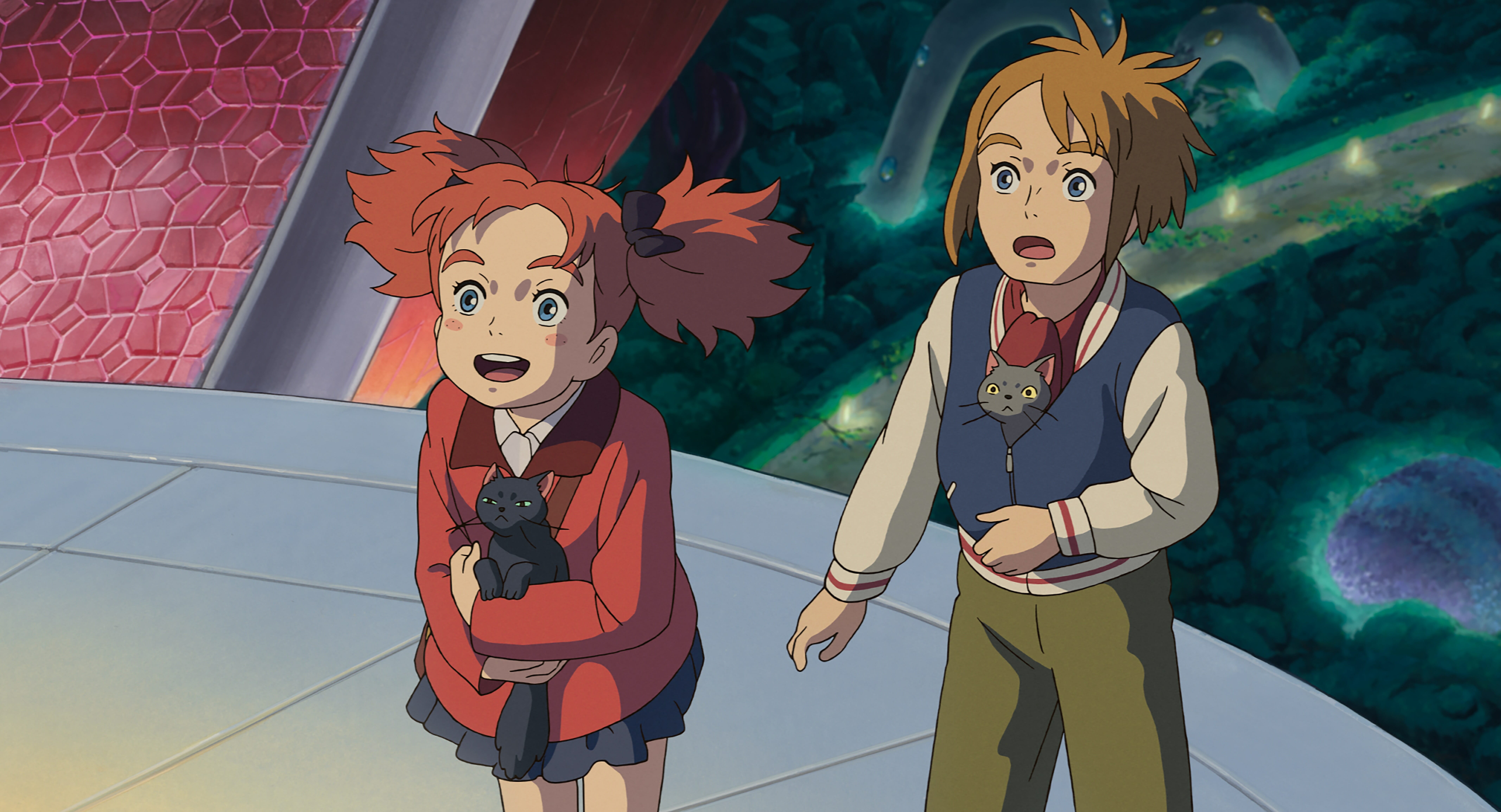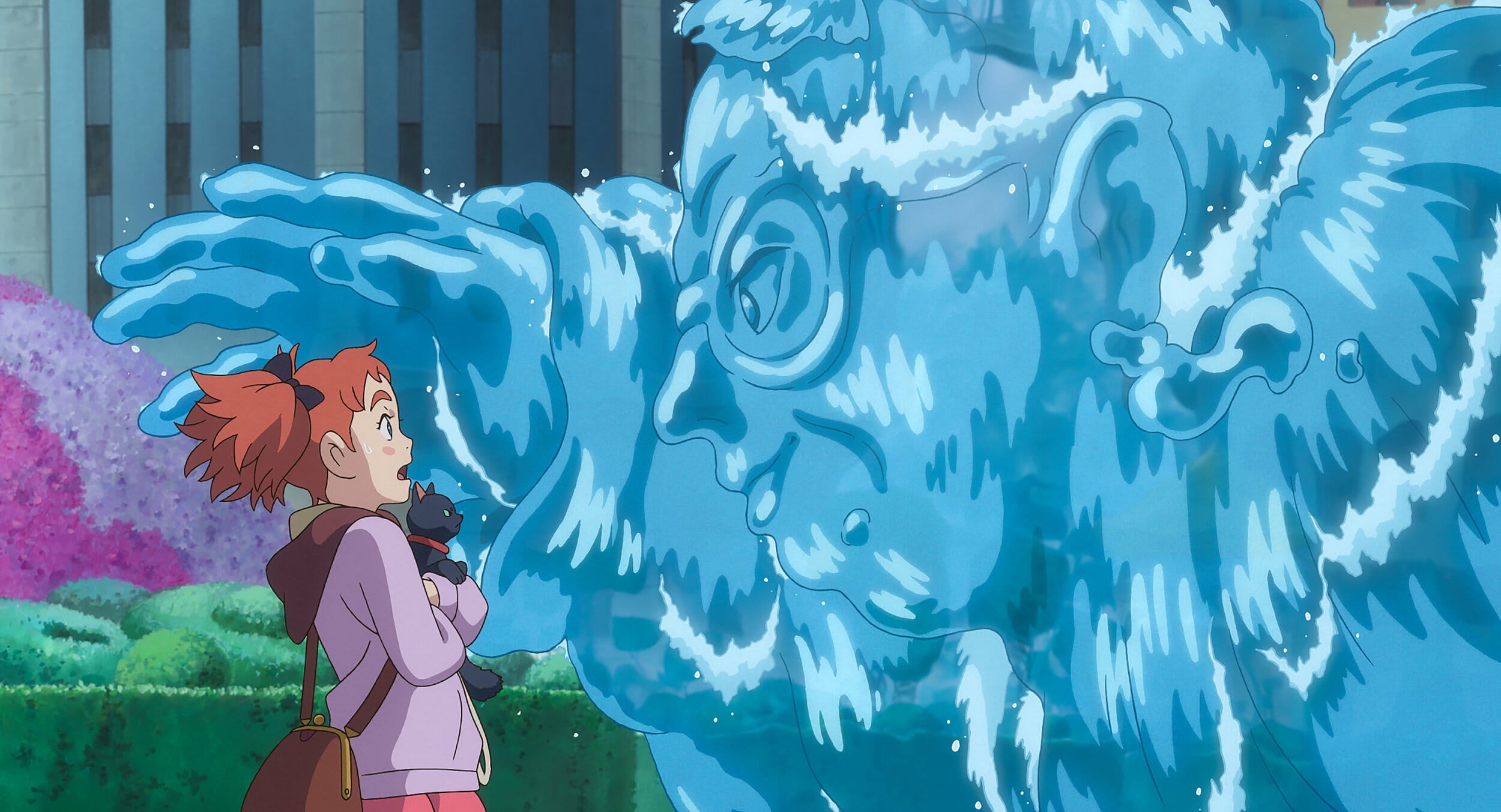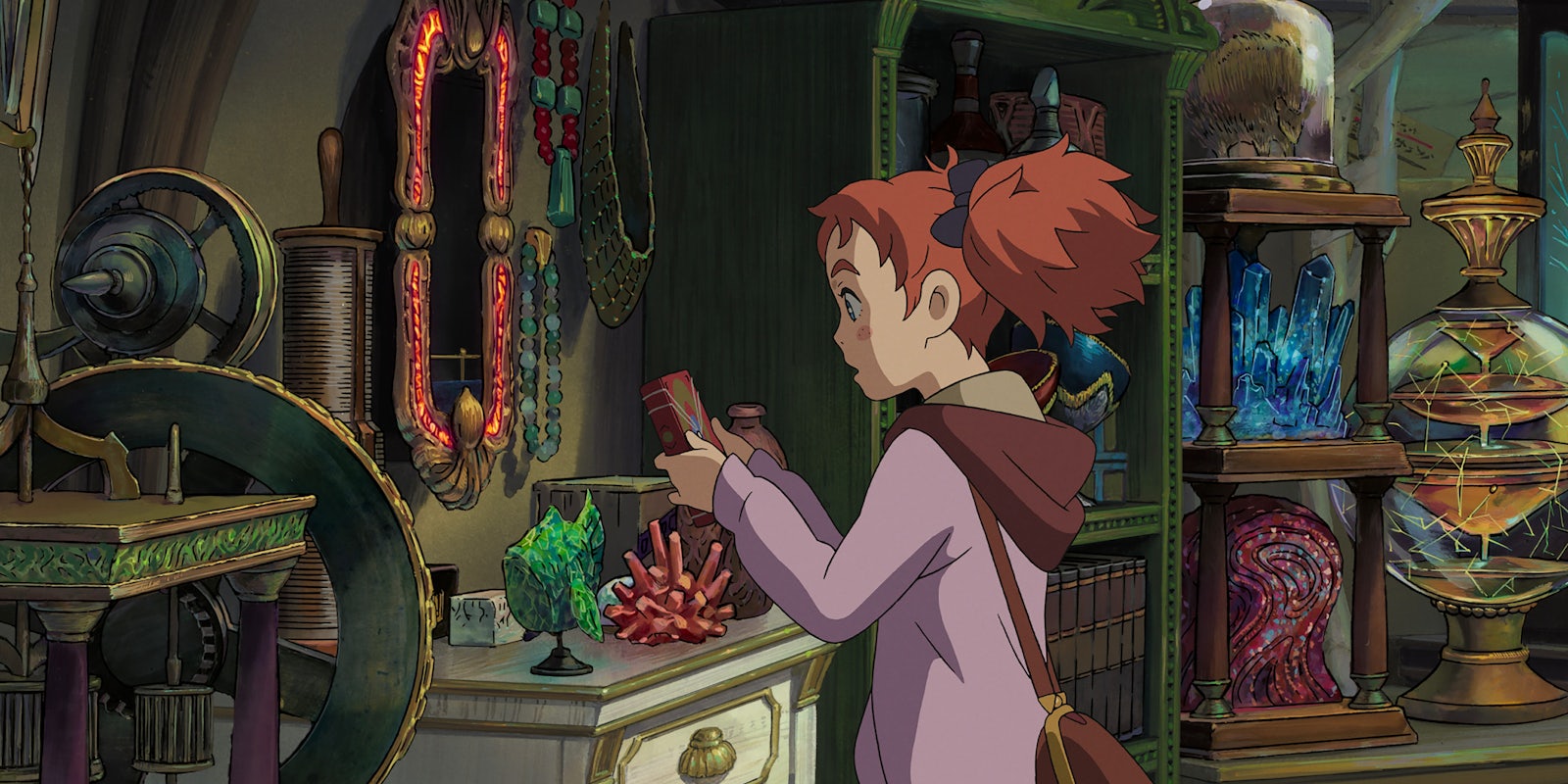Mary and The Witch’s Flower is a colorful and visually stunning spectacle, a film that packs plenty of detail within its frames. And while it doesn’t always capture the magic it attempts to display, the film is carried by the charm and heart of its characters.
Launched in 2015 by several Studio Ghibli alums, including director Hiromasa Yonebayashi (When Marnie Was There and The Secret Life of Arrietty), Studio Ponoc has a lot to live up to. Mary and The Witch’s Flower—perhaps a bit unfairly—will inevitably be compared to Studio Ghibli and its storied film catalog. Even Studio Ghibli’s lesser-known films are considered to be masterpieces of animation. And Mary and The Witch’s Flower certainly invokes some tropes we’ve seen in past Studio Ghibli films: a young and curious girl encounters something magical and is whisked away on an adventure. Filled with self-discovery, the film illustrates that while the fantastical elements might be new and even a bit scary, the humans are the real villains.

Based on Mary Stewart’s 1971 book The Little Broomstick, it follows Mary (Ruby Barnhill), a young girl stuck in the countryside with her great-aunt. She discovers the Fly-by-Night flower growing in the woods, a rare plant that blooms once every seven years and gives her magical for a short period of time. With an expressive black cat by her side and a broomstick filled to the bristles with personality, Mary is transported to Endor College, a prestigious academy for witches. She meets Madam Mumblechook (Kate Winslet) and Doctor Dee (Jim Broadbent), who are almost instantly impressed with her magical ability.
Mary is immediately relatable, uncomfortable in her own skin and prone to lashing out whenever her new neighbor Peter makes fun of her red hair. Her attempts at trying to help others often result in unintentionally making things worse, but she does genuinely care for them. She even takes the time to tuck Tib, the frightened black cat who runs into her room, into bed. But at Endor College, both Mary and Tib are something to behold.

Mary’s unruly red hair, which she ties back into pigtails, is an indicator of a talented witch. (The most powerful witches are redheads, Madam Mumblechook tells her.) Tib is no longer an indicator of bad luck; his black fur and green eyes are the markers of a powerful familiar. Mary gets the hang of broom riding in only one flight, something she’s told should normally take a year to master. She’s able to make herself invisible in front of an advanced class by chanting, and a spellbook she finds gives her even more power. Compliments upon compliments are thrust onto Mary, who’s half-convinced that what she’s experiencing is all a dream and still can’t quite believe it after returning home.
The tour of Endor College is like Harry Potter on steroids, with all-too-brief glimpses into the kinds of classes witches normally take. Mary proves she’s already well beyond that skillset thanks to power granted by the Fly-by-Night flower. But the education is just window-dressing as both Mumblechook and Dee reveal their interest in far more repulsive and morally questionable research, an area that isn’t explored as much as it could be.

The colors in Mary and The Witch’s Flower are striking on the screen, from the assortment of statues at Endor College to the items in Mumblechook’s office. In the opening sequence, a young redheaded girl escapes a growing magical fire on a broomstick as she’s chased by flying creatures and a hand that’s just out of reach. The creatures are also something to behold, both the ones twisted against their will and the ones who are willing to help.
https://www.youtube.com/watch?v=ndaZ55DB4v8
But the film stumbles a bit in the middle, and sometimes it seems unable to escape the shadow cast by Studio Ghibli, especially visual comparisons to Kiki’s Delivery Service, Howl’s Moving Castle, and Spirited Away’s Yubaba. The villains are somewhat cartoonish and some of the side characters are underdeveloped, but the message it drives home—that you don’t necessarily need magic to solve all of your problems—is a powerful spell of its own, even if it doesn’t strike as much of an emotional punch as we might’ve expected.
Mary and The Witch’s Flower is a promising first showcase for Studio Ponoc, which was formed at a time when the future of Studio Ghibli remained uncertain. (Studio Ghibli is now back in business as it works on legendary director Hayao Miyazaki’s upcoming film Boro the Caterpillar.) Studio Ponoc makes a striking entrance with visuals that stick with you and plenty of potential for what kinds of stories it can tell. We can’t wait to see what it comes up with next.
Mary and The Witch’s Flower is now playing in select theaters.


